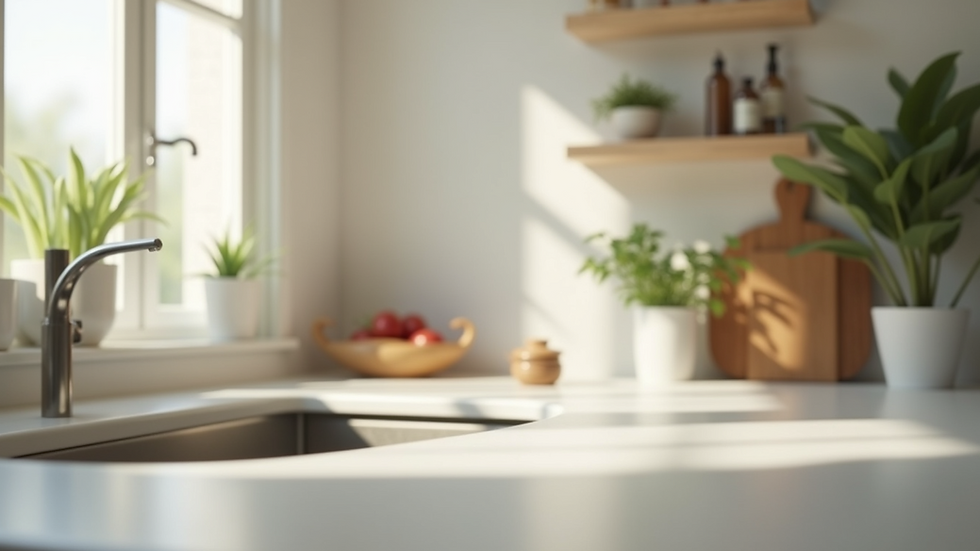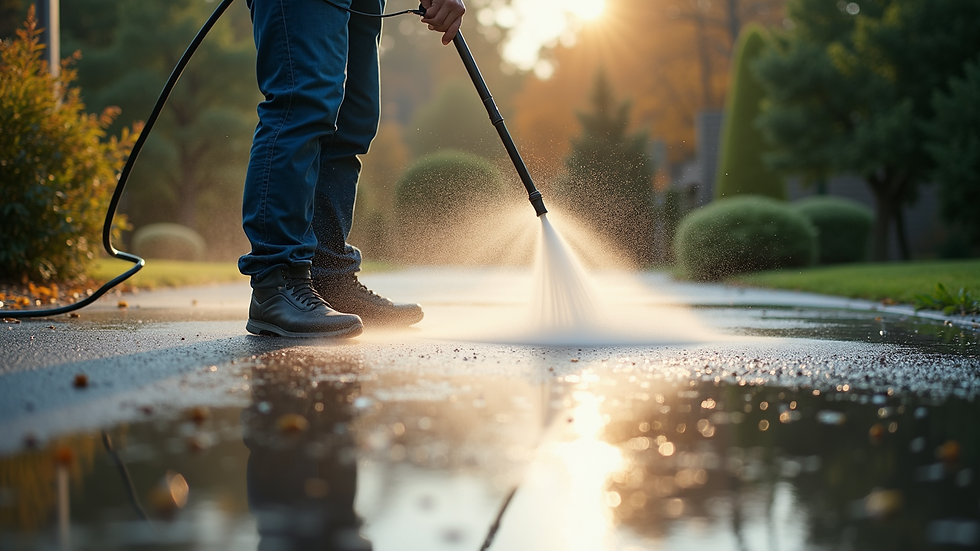Understanding the Science Behind Surface Cleaning
- Endless Summer Pressure Cleaning LLC
- Jun 10
- 3 min read
In our daily lives, cleanliness plays a crucial role. One of the most effective ways to maintain cleanliness is through surface cleaning. But what is surface cleaning, and why is it important? This post dives into the science behind surface cleaning, exploring techniques, benefits, and tips for achieving a pristine environment.
What is Surface Cleaning?
Surface cleaning refers to the process of removing dirt, grime, and contaminants from various surfaces. These surfaces can include floors, walls, furniture, fixtures, and outdoor areas. While the term may sound simple, the methods employed can vary greatly depending on the type of surface, the extent of dirt buildup, and the desired outcome.
Cleaning is not just about appearances. A clean surface can prevent the spread of germs and allergens, promote a healthier environment, and extend the life of materials. For example, regular cleaning of wooden surfaces helps prevent rot and decay, while grime buildup on tiles can lead to mold growth.

Methods of Surface Cleaning
Various methods exist for surface cleaning, each with its strengths and weaknesses. Below are some common techniques:
1. Manual Cleaning
Manual cleaning involves the use of brushes, cloths, and cleaning solutions to scrub surfaces. This method is highly effective for small areas and delicate surfaces where machine cleaning could cause damage. It allows the user to apply targeted pressure and focus on specific spots.
For example, wiping down the kitchen counter with a cloth and a disinfectant spray removes visible stains while killing germs on the surface.
2. Pressure Washing
Pressure washing employs high-pressure water to remove dirt and debris from surfaces. This method is particularly effective for outdoor surfaces like driveways, patios, and siding. The force of the water can blast away stubborn stains without requiring harsh chemicals, making it an environmentally friendly option.
If you want to ensure that your concrete driveway remains clear of dirt and algae, considering professional pressure cleaning services may be beneficial for optimal results.

3. Steam Cleaning
Steam cleaning uses vaporized water to sanitize and cleanse surfaces. This method is particularly effective for carpets, upholstery, and hard surfaces. The high temperature of the steam kills bacteria, viruses, and dust mites, leaving surfaces clean and safe.
For instance, steam cleaning carpets can remove deeply embedded dirt and allergens, providing a healthier living space.
The Science Behind Cleaning Agents
Understanding the cleaning agents used in surface cleaning is essential for proper maintenance. Here are some components that make up effective cleaning solutions:
1. Surfactants
Surfactants are compounds that lower the surface tension of water, allowing it to spread more readily and penetrate dirt and grime. This makes it easier for the cleaning solution to lift away contaminants. Surfactants can be found in many household cleaners, detergents, and soaps.
2. Acids and Alkalis
Many cleaning products contain acids or alkalis to break down specific types of dirt. For example, vinegar and lemon juice are natural acidic cleaners that can dissolve mineral deposits and grime. On the other hand, alkaline products can effectively remove grease and oils.
3. Disinfectants
Disinfectants kill germs and bacteria, providing an additional layer of cleaning. Common disinfecting agents include bleach and hydrogen peroxide. It’s crucial to follow instructions and allow disinfectants to remain on surfaces for a specified period to maximize their efficacy.

Best Practices for Effective Surface Cleaning
To achieve the best results when surface cleaning, consider the following practices:
1. Choose the Right Tools
Using appropriate tools is essential for effective cleaning. Soft cloths work wonders for delicate surfaces, while scrub brushes are ideal for tougher stains. Ensure that you select tools that suit the surface you are cleaning.
2. Follow a Systematic Approach
Adopt a systematic approach to cleaning by working from top to bottom and left to right. This method prevents dirt from falling onto cleaned areas, ensuring you don’t have to redo work.
3. Allow Time for Soaking
If using a cleaning agent, allow it to soak for sufficient time to break down dirt and grime effectively. Rushing this step may result in ineffective cleaning.
4. Avoid Mixing Products
Avoid mixing cleaning products, particularly those containing bleach and ammonia, as this can create harmful gases. Stick to one type of cleaning solution at a time for safety.
5. Regular Maintenance
Regular cleaning prevents dirt buildup and makes each cleaning session more manageable. Create a cleaning schedule for different surfaces, ensuring each area receives attention regularly.
Final Thoughts on Surface Cleaning
Surface cleaning is a vital aspect of maintaining hygiene and cleanliness. By understanding the various methods, cleaning agents, and best practices, you can ensure your spaces remain spotless and safe. Cleaning is more than just aesthetics; it's essential for health and well-being.
Implement these methods and tips for effective surface cleaning to maintain a clean, enjoyable environment in your home or workplace. Whether through manual effort, pressure washing, or steam cleaning, a little knowledge can go a long way in achieving a pristine result!




1 Comment